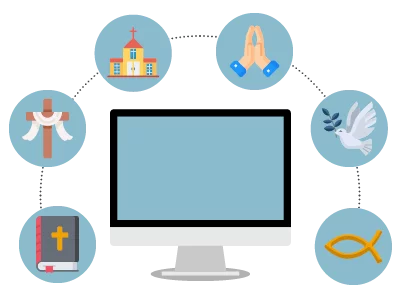In the ever-evolving landscape of digital spirituality, a new chapter is unfolding as Software Territory endeavors to prepare a groundbreaking Church Management App. As technology continues to intersect with traditional practices, this upcoming app aims to revolutionize the way churches manage their affairs and connect with their congregations in this digital era.
The Rise of Digital Devotion
Connecting the Faithful: Amidst this technological renaissance, Software Territory’s Church Management App seeks to enhance the sense of community among believers. Imagine a platform that seamlessly integrates online prayer communities with practical tools for church administration. This app promises to bridge the gap between the sacred and the practical, fostering deeper connections among congregants.
24/7 Access to Faith: With the Church Management App, accessibility becomes a cornerstone. Church leaders will be able to engage with their community, share announcements, and manage events effortlessly. This 24/7 accessibility ensures that spiritual support is not confined to specific times but is available whenever the need arises.
The Power of Prayer Apps
Personalized Spirituality: Software Territory’s innovative approach extends to the personalization of spirituality through the Church Management App. Congregants will have the ability to customize their prayer experiences, set reminders for communal events, and seamlessly access relevant religious resources. This app aspires to become a comprehensive tool for individuals to tailor their spiritual journey.
Virtual Prayer Partners: Envision a feature within the Church Management App that facilitates virtual prayer partnerships. Software Territory recognizes the importance of community in spiritual growth and aims to provide a platform for users to connect with like-minded individuals, fostering a sense of unity even in the digital realm.
Navigating Challenges and Embracing Opportunities
Digital Discernment: As we eagerly anticipate the release of this Church Management App, the importance of digital discernment remains paramount. Software Territory acknowledges the responsibility of offering a reliable and secure platform, ensuring that users can engage in their faith without concerns about misinformation or misuse.
Embracing Diversity: The upcoming Church Management App isn’t just a tool; it’s a catalyst for embracing diversity within the faith community. Software Territory envisions a space where believers from different traditions come together, creating an environment that celebrates the richness of global spirituality.
Conclusion: Pioneering the Future of Faith Management
In conclusion, as we explore the landscape of online prayer communities and apps, Software Territory’s commitment to developing a Church Management App stands as a testament to the evolution of faith in the digital age. This app aims not only to streamline church administration but also to deepen the spiritual connections within congregations. As we eagerly anticipate its release, we find ourselves at the intersection of tradition and innovation, forging a path toward a more connected and spiritually enriched future.








